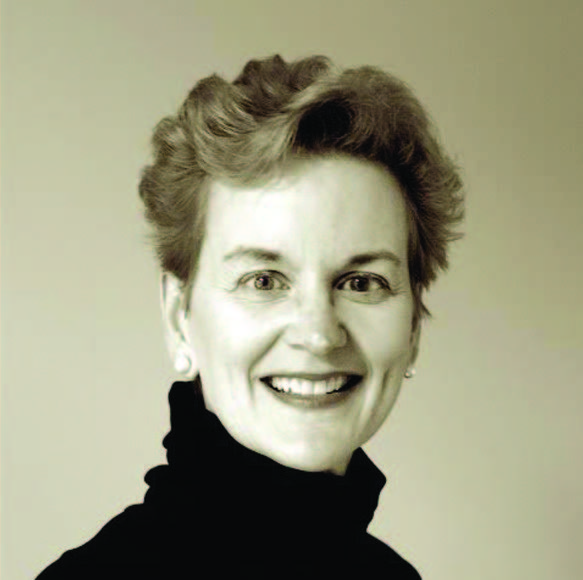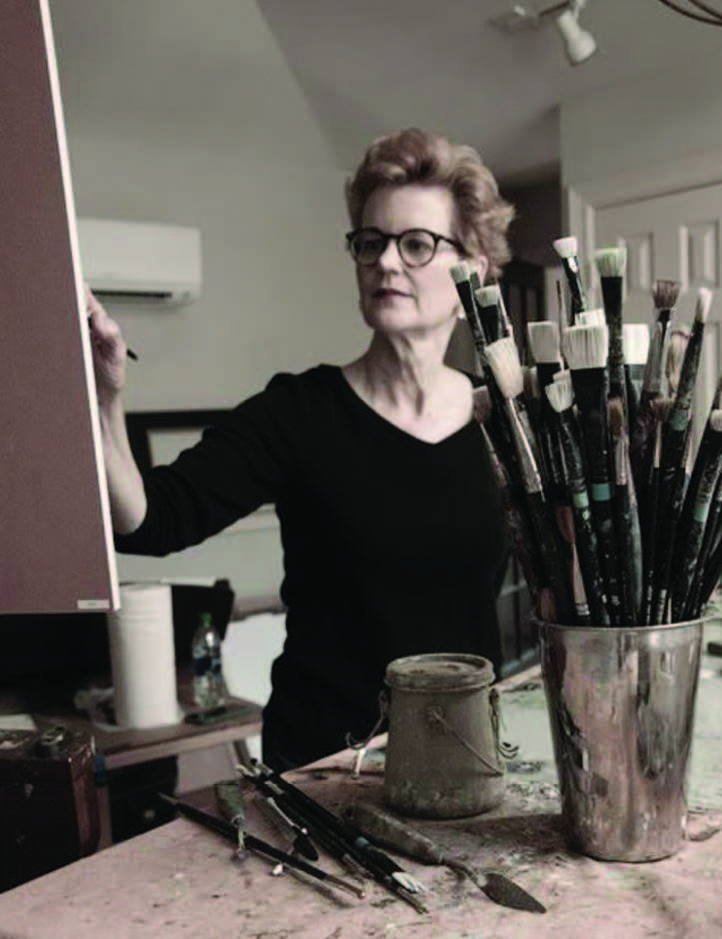It all starts with knowing how to draw. On a chilly weekday morning, Mallory Agerton was out on Loudon Road with her sketchbook.
“I did the sketch from my car because it was 34 degrees. The light and dark patterns were so beautiful on the hills. As the sun hits them, the leaves look orange and the rocks look peach. This morning I added some cows, then a deer walked by and I wrote, ‘deer?’ in my sketchbook,” she said. “How can you possibly expect to paint if you can’t draw it?”
This is how landscape artist and oil painter Agerton begins — with drawings and notes. She’s not necessarily trying to make everything perfectly accurate. She may swap deer for cattle, or change the season, or turn a road into a path.
“This is an analogy: I try very hard to make my work not journalism, but I’m trying to write poetry,” she said.
Agerton attended the High School for the Performing and Visual Arts in Houston, then earned a bachelor’s of fine arts at the University of Texas at Austin. After working as a portraitist, Agerton participated in The Landscape Atelier Program with master artist Deborah Paris. She took classes on skies, trees, water, composition and more. She copied the paintings of the greats, including the
Hudson River School.

And she did a lot of memory work, learning to look closely at a scene and then draw it without the aid of a photograph. She was taught to look at a master work for 10-15 minutes, then close the
book and recreate the drawing from memory. Using this technique means some details are missed, but the overall feeling of the scene emerges more clearly.
“Memory is like a muscle — it can be developed by deliberate practice. In the past artists were taught this skill as part of their standard training,” Agerton said. “When you use memory, you leave out the unimportant.”
Agerton says working from memory helps her be more creative. One day she was out on Upper Live Oak and noticed a scene that she thought she might like to paint, with a few changes.
“I saw this tree and thought, ‘Wow, that is a great tree that is this S curve,’” she said. The final painting moved the tree, cut out the mechanic’s shop and added bluebonnets. She remembered
what she needed to remember.
Agerton’s sketchbook is full of scenes and notes, including names of paints, notes about color, suggested proportions. Sometimes she draws one element, like the edge of a spruce tree or different types of cacti. On her Loudon Road sketch, she didn’t add too many details about the cactus because she has detailed drawings of them in other notebooks.
Once she decides to pursue a particular image, she may do a color study before she commits to the final oil painting.
“I got that idea when I used to work with portraits because I would do it for clients,” Agerton said. “I might never do this particular painting but I may use the sky for something else. I have a higher success rate because I do all that preparatory work.”
In 2018, Agerton received the “Best Landscape” award in the National Oil & Acrylic Painters’ Society’s international online exhibition. She also received two merit awards from the organization for shows in 2019. And in 2020 she was chosen to be part of the Allied Artists of America’s 107th juried exhibition. She shows at Hawthorne Fine Art in New York City, Ella Walton Richardson Fine Art in
Charleston, South Carolina, Foltz Fine Art in Houston and Gallery 330 in Fredericksburg. She is an associate member of Oil Painters of America and a member of National Oil & Acrylic Painters’ Society.

Agerton considers it a privilege to be able to paint and draw every day. In each step of the process she is asking questions — What’s the darkest dark? What’s the lightest light? What is moving? What’s the most important thing about the scene? Those questions help her distill why she was drawn to the landscape in the first place.
“You don’t have to find the perfect scene because when you start really looking at it, it becomes perfect,” Agerton said.
As viewers enjoy her paintings of the Texas Hill Country, she wants them to recall their own favorite memories of being out in nature and to feel reconnected with their spiritual side. The final painting hanging in the gallery might not look exactly the way Agerton first saw it. It might be just a little bit better.

